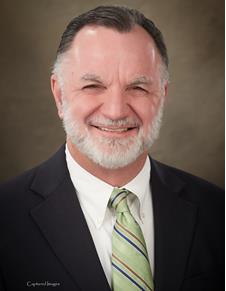
This might be the dullest, but most important column, that I write. Earlier, I wrote about the City of Fort Scott creating and launching a Land Bank, which was a great move. It gives us a good foundation upon which we can build. The next building block to add to this slab is a Community Land Trust.
You might be asking, “What the heck is that?” It is a vehicle that might be one of the keys to addressing our most critical need: quality, affordable housing for working families.
How does it work? The following is a hypothetical example:
1.Land Bank acquires an unlivable residential property on a city lot through a tax sale, and the existing structure is demolished and hauled away.
2.Property is deeded to the Community Land Trust (“CLT”), a not-for-profit corporation, to take advantage of charitable donation status.
3.CLT engages an architect, and building plans are drawn for a 3 bedroom, 2 bath, 1,600 square foot home. Estimated cost to construct: $200,000.
4.CLT solicits donations and grants for at least 20% of the project, from sources such as the Fort Scott Area Community Foundation. Project cost reduced to $160,000.
5.CLT signs an agreement with a high school or college vocational class to provide free labor and construction supervision, saving $50,000 in labor. Project cost reduced to $110,000.
6.Construction financing is obtained for $110,000.
7.Home is put on the market for $125,000, which should fall within an acceptable cost range to achieve an appraisal for an adequate amount for a buyer to secure financing.
8.Home is sold, an agreement is signed, and a ground lease is established. The buyer pays ground lease cost of $50 per month in addition to their mortgage payment.
9.CLT pays the excess sales proceeds to Land Bank.
10.Buyer agrees that the value they can receive in a resale is capped at $125,000, plus the additional value created by investments in the property, such as additions, fencing, etc. All modification must be approved in advance by the CLT. A property inspection is performed at least annually to make sure it is being maintained.
11.Buyer lives in the property for five years, and desires to move. The home is put on the market for $125,000, plus a modest cost of living increase of 1% per year as a profit to the CLT for future investments, and home is sold for $131,250. The original buyer builds equity by paying down their mortgage and investing in improvements over the years that create value.
12.New buyer signs the same agreement as previous buyer and the cycle is established.
This is a process that can be repeated, thereby establishing a supply of quality, affordable housing in perpetuity.
Every aspect of this plan is doable by our communities in Bourbon County. There are over 225 Community Land Trust operating successfully in the United States, including Douglas County, Kansas. Our Land Bank has approved a study of the concept; now is the time to move ahead.
Thank you for describing this process in simple language. In my younger years I was a construction loan officer at a bank so it makes a lot of sense to me. I hope the City approves.
Very much in agreement with this concept!
Mr. Motley, can you describe if there is an exit procedure for this proposed housing development plan? In other words, if the buyer in five years does not what to be overseen by a committee and would like to “buyout” or opt-out is there a process? I cannot dispute what a great way for a new home that would in ordinary circumstances require $250k+ to provide at a price less than half; but the “American Dream” does not have this formula in the plan. Can or is there a way to “cash out” , eliminate the oversite, get the advantage of equity in your home? Or is this just a reverse mortgage where the bank gets all the benefits as long as I make my payments I get to live there?